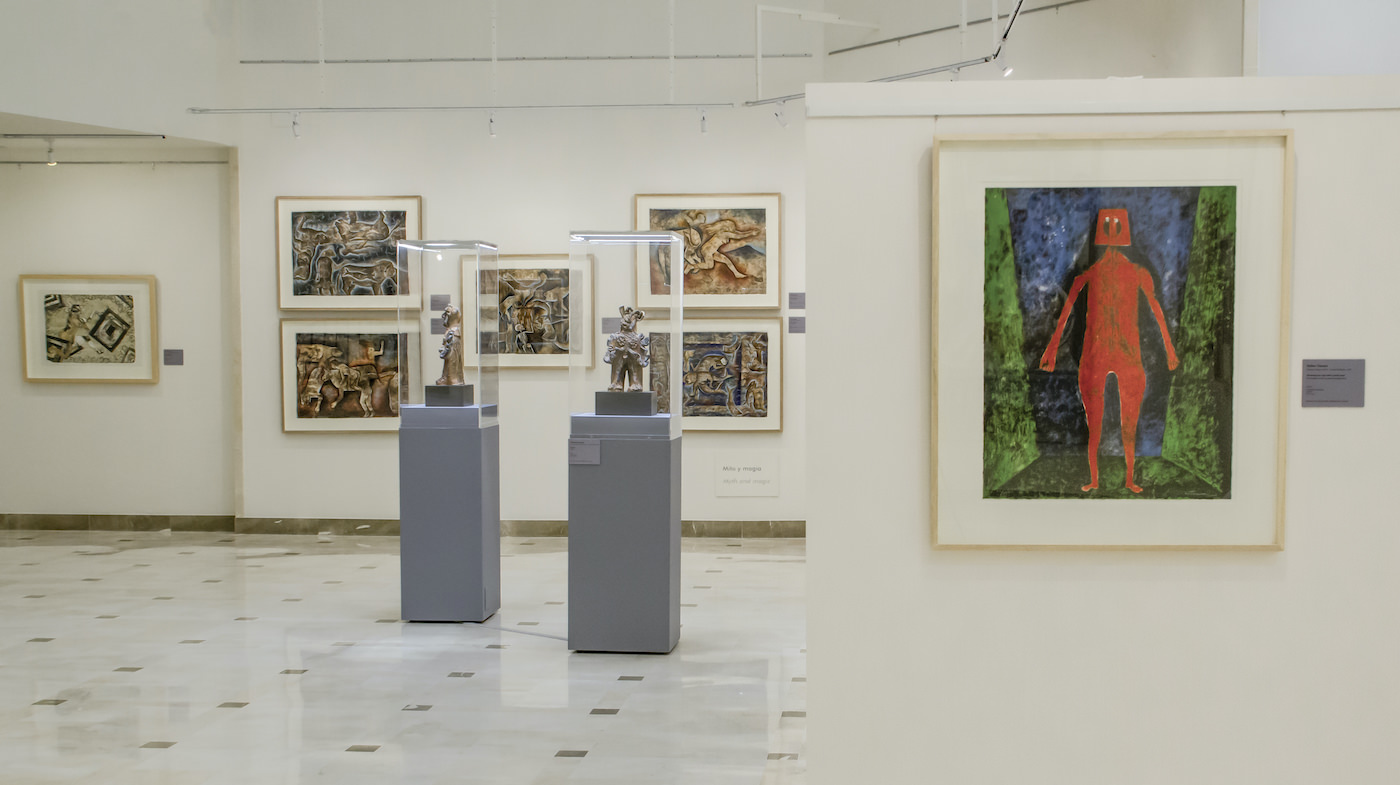Ernesto Deira
Argentine artist of the New Figuration movement (or Neo-figurative art). Together with Luis Felipe Noé, Rómulo Macció and Jorge de la Vega, he was part of the Otra Figuración group (“Other Figuration”), which was the name given to their first collective exhibition in 1961.
This homogenous and diverse group lasted in this form until 1965, with the artists continuing to follow the principles of Neo-figurative art individually in their work.
Formally speaking, what unites the group is the representation of the human figure from an existentialist point of view. As Noé himself states, their way of working did not suggest a return to figuration, but rather an alternative. The human figure is included within an artistic setting where informal art prevailed, be it Expressionist or abstract. They take their language from Informalism but become removed from this movement by including references to the human figure.
Expressive informalism and protagonism of color
Ernesto Deira takes aspects from Informalism and Expressionism that allow him to play with the matter, forms and colour, to distort the figure, representing Man in his most destructive aspect.
Despite the chaotic appearance of his works, Deira took extreme care in their composition and colours, using them both to transmit a sense of restlessness and anguish.
-
 Caronte, 1985
Caronte, 1985Charon
Ralli Collection
Ernesto Deira
Acrylic on fabric
200 x 160 cm
“Caronte”, a ticket to the other riverbank
In the work before us, entitled “Caronte” [Charon], the colour red merges between the background and the figure, which we can just about distinguish thanks to a fine line drawn by the artist and detailed chromatic changes in the figures. Other geometric forms intermingle on the canvas next to this large patch of red, forming in turn part of the human figures represented. In this work we can distinguish human forms, or parts of them, which move and are arranged on the canvas as if they were in a state of limbo (without gravity, without coherence, without narrative; they are merely suspended beings immersed in a red space).
As we mentioned earlier, the use of colour and forms always directs us towards a composition in which the human figure is present. Beyond the figurative and material references, we can discern the subject from the title. In Greek mythology, Charon, which literally means “fierce brightness”, was the ferryman of Hades, responsible for transporting the souls of the dead to the other side of the River Acheron in exchange for a Greek coin called an obolus. If they could not pay the fee they were condemned to wander the shores for one hundred years until Charon would agree to take them at no charge (this myth is the origin of the Greek tradition of burying bodies with a coin under their tongue).
Silvia Sánchez Ruiz
Curator
SULLIVAN, E. J. (coord.). Arte Latinoamericano del siglo XX. Madrid. Ed. Nerea, 1996. 351 páginas. ISBN: 8 489569 045
TRABA, Marta. Arte de América Latina. 1900-1980. Washington, D.C.: Banco Interamericano de Desarrollo, 1994. ISBN: 0-940602-69-5. 178 páginas.
TAMBURRINO CABRERA, ESTEFANÍA. Análisis crítico-descriptivo de la nueva figuración argentina 1961-1965. Ernesto Deira, Rómulo Macció, Jorge De La Vega y Luis Felipe Noé [Tesis de grado]. Directora: Guadalupe Álvarez de Araya Cid. Santiago: Universidad de Chile, 2008. P. 16-42. Disponible en: https://repositorio.uchile.cl/bitstream/handle/2250/101452/ar-tamburrino_e.pdf [Date of access: 22/02/2018]
Related artists
Related Exhibitions
RELATED PROGRAMS

